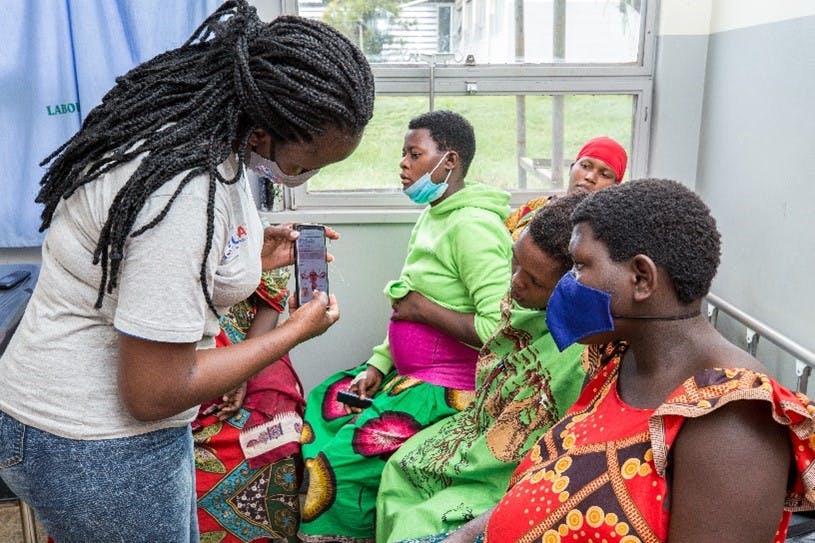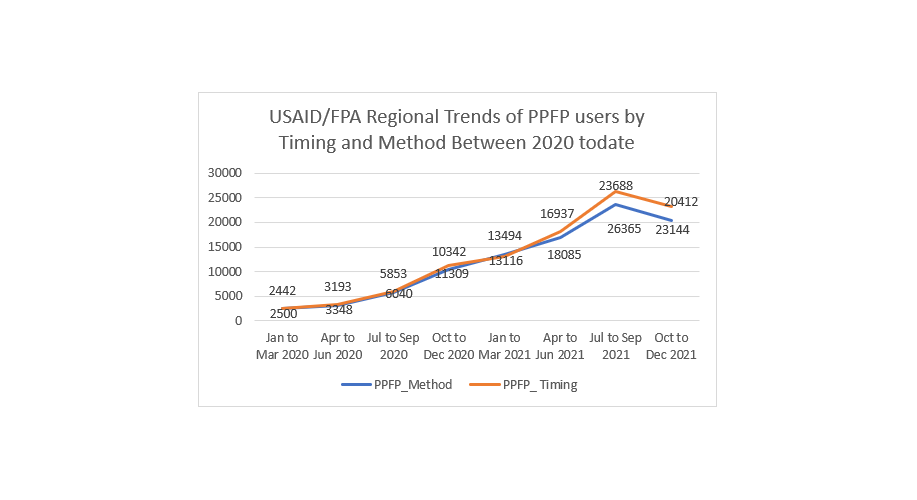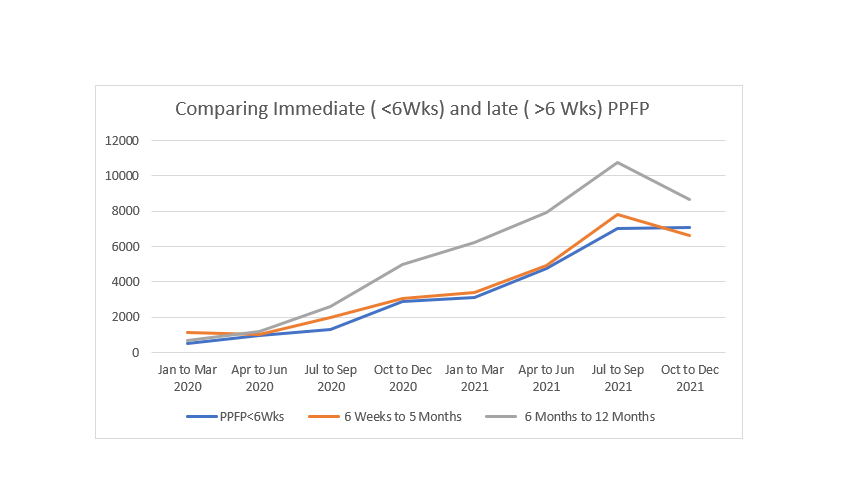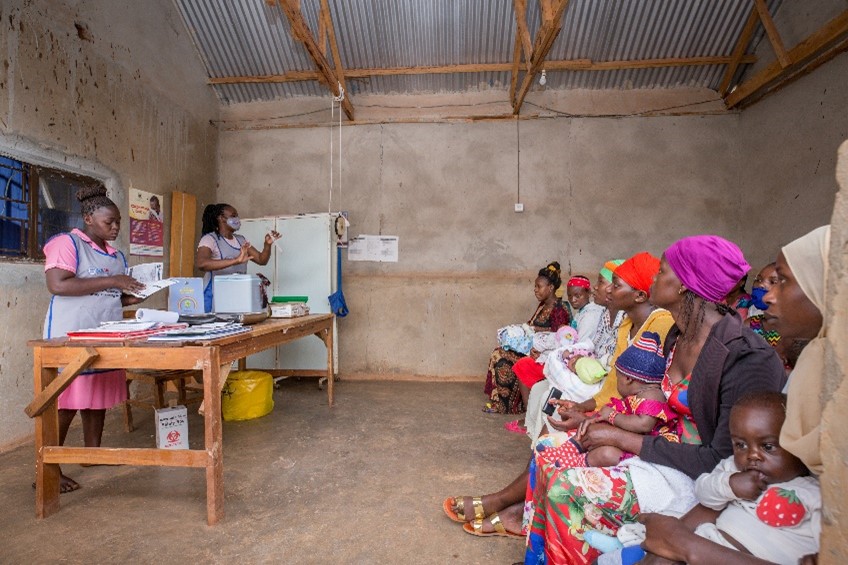
News
Driving Toward Dramatic PPFP Uptake: Pathfinder International’s Uganda Family Planning Activity
March 25, 2022
In the News
Previous

Announcing FP2030 Hubs in...
Next

First-ever country-level ...
Source:By Ana Vázquez (FP2030 Global Engagement Intern), Irene Nakiriggya (Pathfinder), Christopher Arineitwe (Pathfinder), Philip Bakahirwa (Pathfinder), Sharon Adero (Pathfinder), Ritah Waddimba (Pathfinder), Pritha Biswas (Pathfinder)
Topics:
Postpartum & Post-Abortion Family Planning
In 2019, Uganda ranked among the 10 countries with highest total fertility rate, with 4.8 total births for women of reproductive age (15-49 years). The unmet need, indicating the share of sexually active women not using contraception despite not wanting more children or wanting to delay the next child was 15.3%, according to Performance Monitoring for Action, highlighting the gap between women’s reproductive intentions and their contraceptive behavior. The Uganda Demographic and Health Survey of 2016 showed Uganda has one of the highest annual population growth rates in the world, at 3%.
Postpartum family planning (PPFP) is an evidence-based program intervention essential for ensuring the health and well-being of mothers and their babies. (Postpartum is defined as the year after a birth; immediately postpartum is considered to be within six weeks of birth.) In Uganda, each year approximately 15% of women of reproductive age have recently given birth and 12% are postpartum but not using a modern method of contraception. This presents a huge opportunity to invest in PPFP.where a large proportion of women of reproductive age are postpartum but not using modern contraception.
In 2020, the United States Agency for International Development (USAID) supported Pathfinder International’s Uganda Family Planning Activity (FPA) to use a Continuous Quality Improvement (CQI) approach so facilities could understand their needs and challenges in providing PPFP (especially immediate PPFP), develop quality improvement indicators, design interventions based on assessment of these indicators, and strengthen health systems. This approach helped to construct a better supply chain of family planning commodities and an engaged medical community for both short-term contraceptive methods and more long-term methods during the postpartum period. Such processes were monitored and supported by frequent data review meetings and outreach events. Other interventions supported by the project to increase PPFP access and uptake included supporting the Uganda Ministry of Health to conduct integrated family planning outreach events, implement a one-facility/one-warehouse approach, and improve quality of documentation and reporting of PPFP services.
Such efforts have had tremendous results. More than 90% of women at different FPA-supported service delivery points were counseled on family planning and the benefits of PPFP, which led to a substantial increase in the number of women using PPFP services, from 2,500 in January 2020 to 23,144 in December 2021. Thanks to the improvement of the service quality of PPFP, the focus shifted from broader postpartum family planning to early postpartum family planning, which also led to an increase in early PPFP uptake six weeks after childbirth, reflecting the high family planning need of women in this period.


Having data-based and facility-led quality PPFP services supported by quality PPFP counseling of women through integrated family planning services helped women make informed choices on using PPFP. Integrating family planning with immunization, antenatal care, childbirth, and postnatal services is critical to fulfill eligible women’s unmet need for PPFP. In addition, integrating supply chain teams into facility CQI committees helps ensure family planning commodity availability through implementation of the innovative one-facility/one-warehouse approach. Working with community health workers strengthened demand for PPFP services and their role in provision of short-term family planning methods at the community level helped bridge the gap between facilities and community accessing services.

Photo: Lovington Kambugu for Pathfinder International 2021. Lydia Balibali, right, an FPA family planning officer, and Susan Namagembe, an FPA-trained health worker, educating a group of mothers about postpartum family planning during an immunization session at Kibibi Nursing Home in Butambala District in central Uganda.
Remarkably, programs focusing on PPFP can dramatically shift use of rights-based family planning, even in countries with high fertility rates and low modern contraceptive uptake like Uganda.








